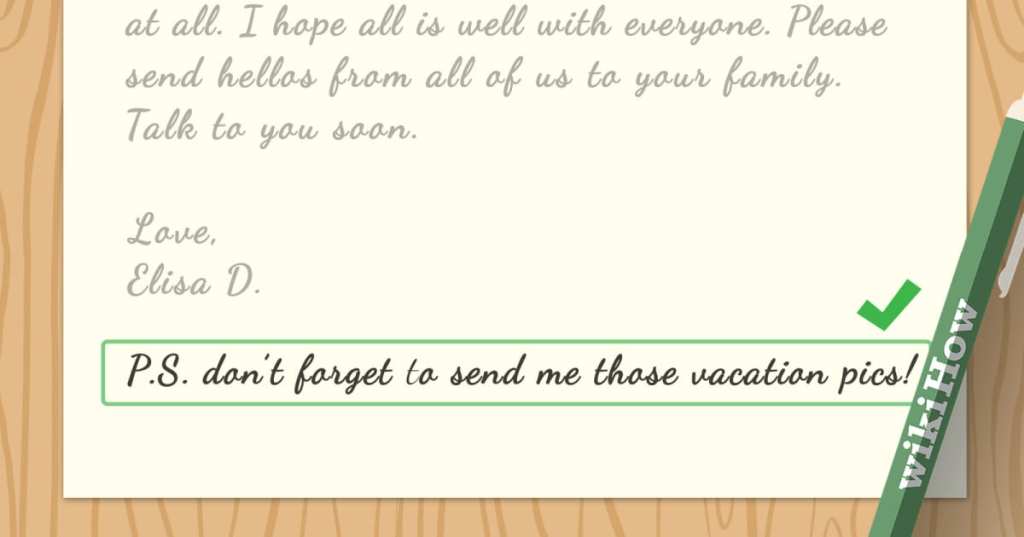Most of us don’t write longhand letters anymore. The only time we send something in the mail is when we’re issuing an annual Christmas card, or perhaps if we have occasion to send invitations or thank you notes after a big life event.
That doesn’t mean we don’t communicate in writing, though. Emails often take the same format as letters used to, which means plenty of us still use those two letters – P.S. – to tack on a thought at the end when we don’t feel like going back and squeezing it into the body of the text.

Image Credit: Pexels
We also use P.S. more casually, like in a tweet or a Facebook post, and often in a sort of sassy tone, don’t you think?
Here’s what it really means, though, and how it really got started, because I know you want to know!
P.S. stands for postscript.
It comes from the Latin, postscriptum, or “written after.”
Why, then, do we use periods after each letter? Because if it’s a shortening of a single word, we shouldn’t need to…and we shouldn’t need to capitalize the letters, either.
According to the Cambridge Dictionary, “PS” without periods is the primary British English version, and Americans opt for the periods.

Image Credit: WikiHow
Because obviously, American English does not and never has cared much about making a whole lot of grammatical sense.
The Chicago Manual of Style has used it both ways, though, so whichever side of the pond you live on, it’s basically a stylistic choice and no one can fault you for it.
Well they can, of course, but they would be the ones being pretentious, not you. This time.
The idea of needing that little postscript made a lot more sense back in the days before computers, though. Now, inserting something with quick click or two of the spacebar, maybe a few rearranged words, is easy. Back then, with an entire letter written by hand in practiced, steady cursive, you wouldn’t have wanted to mess up the flow – and so, you put those errant, extra thoughts at the bottom.
In a postscript.

Image Credit: Pexels
Dictionary.com says the term appeared in English in the early 1500s and quickly became popular. By the 1600s it was used and understood widely.
Just because we don’t technically need them now clearly doesn’t mean they’re going away. Like all fun and useful bits of language, this one has evolved – so go ahead and use a postscript online to make your pithy final point.
PS: I don’t blame you one single bit.






